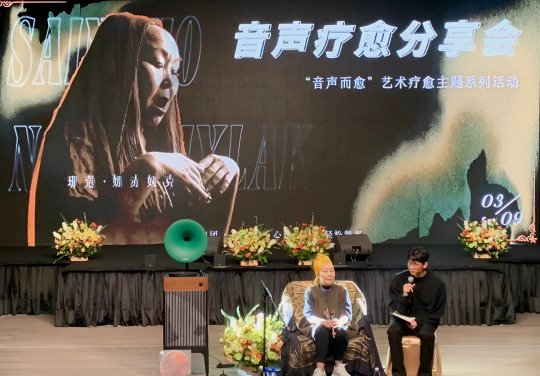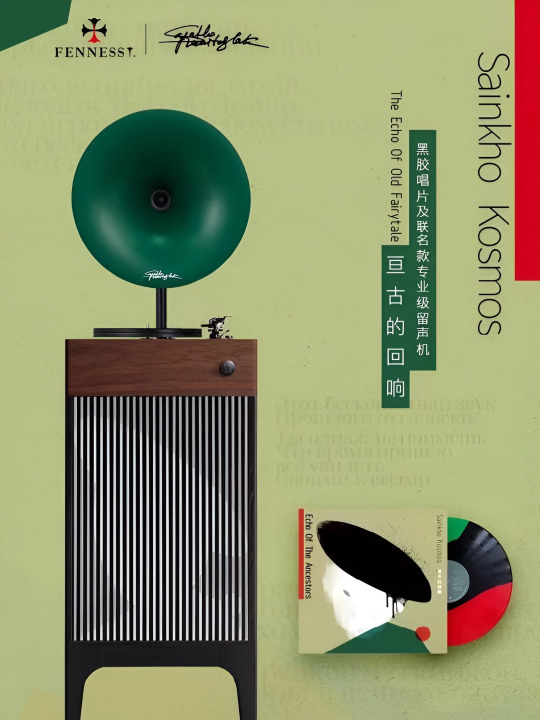#and sygyt (whistling)
Text


Sainkho Namtchylak is an experimental music artist known for her unique vocal style, especially in throat singing. Her diverse musical repertoire ranges from avant-garde jazz to electronic and traditional Tuvan music.
In Sainkho's music, you'll encounter a captivating ethnic allure. Her mastery of Mongolian throat singing techniques, including khoomei (throat singing), kargyraa (vocal fry), and sygyt (whistling), delivers a mesmerizing auditory journey!
#SainkhoNamtchylak#Experience the healing power of Sainkho Namtchylak's music!#Fennessy#Donuti5#turntable#vinylrecord#musicsharing#In Sainkho's music#including khoomei (throat singing)#kargyraa (vocal fry)#and sygyt (whistling)
0 notes
Text
hey hey hey hey
i can do this now
its called sygyt and its that high-pitched whistling
1 note
·
View note
Text
LISTEN TO KHOOMII, DISCOVER MORE ABOUT THIS UNIQUE ART OF MONGOLIA

Khoomi, at times alluded to as Tuvan Throat Singing, is a singing craftsmanship performed by ethnic specialists from the Mongolian city Tuva. It is additionally depicted in different pieces of Mongolia and Siberia as well. This familial sound-delivering straightforwardly from an individual's throat can produce various kinds of voices. This incorporates the sound of streaming water almost a stream or the sound of downpour in a woods. The specialists commonly utilize a scope of various styles wherein an entertainer produces more than one pitch all the while simultaneously by applying certain music of the major pitch utilizing upper vocal lines. Westerns typically alluded to this sort of music as suggestion singing or sharp singing.
PRE-REQUISITES AND ESSENTIALS OF KHOOMI
The pre-necessities and fundamentals of khoomi or throat singing require enacting various arrangements of muscles to control the reverberating offices of the vocal lines and lot under certain tension. The supported and consistent compressed wind stream should be in the middle of the chest and stomach. Similarly as with exaggerated singing and creating that sort of voice straightforwardly from the throat, the abilities and skill require long periods of preparing to be an expert.
Birthplace AND CONTEXT:
Khoomi/throat-singing or hint singing began from the local people and native Turk and Mongol clans of the Syan and Altai heaps of southern Siberia. A few history specialists additionally accept that this came from western Mongolia. These neighborhood clans and networks are identified with Inner Asian culture, which lies halfway of the snowcapped mountains between Central Asia, East Asia and envelops segments of these rocky and international frameworks: Mongolia, Russia (the republics China including independent areas of Tibet and Mongolia. The area comprises of numerous transient and neighborhood individuals who share the regular social and melodic act of utilizing agreeably rich vocal robots and tones.
Notwithstanding, a few researchers are not sure as to precisely when and where Khoomi or throat-singing was begun, however they are sure around one component that this singing example and strategy style has been around for several centuries and is a primary segment and fixing to both Tuvan and Mongolian culture.
Ethnomusicologists solidly accept that the advancement and event of Khoomi or throat-singing in Mongolia and Tuva were generally influenced by the districts and their topography. A large portion of Tuva (around 80%), situated in south-eastern Siberia, which comprises of mountains while Mongolia is a remarkable mix of prairies and gigantic bumpy territories.
STYLES and 21ST CENTURY:
Singing styles and groupings change as indicated by districts and territories. In western Mongolia, singing styles are perceived as a rule by the pieces of the vocal strings that figure outstandingly in the control of tone and pitch. For instance, the Bait public highlight the base of tongue style, and western separate it from labial, nasal part, glottal or throat, and chest or stomach styles. The westerns culture additionally utilizes a profound and non-melodic throat-singing style bass, and certain ethnomusicologists can combine various styles with verses. Nonetheless, Tyvans frequently alludes to singing examples according to topography and scene.
TYVANS DEVELOPED THROAT-SINGING MOST PROMINENTLY.
Aside from every one of the conversations above, Tyvans were the ones who have created throat-singing most noticeably. Despite the fact that classificatory discussions encompasses among Tyvans and Mongolians' native instructors, researchers, and entertainers just as among Western scholastics, there are three comprehensively recognized styles of Tyvan throat-singing: khöömei, which likewise demonstrates a delicate throat style with light music over a conventional vocal robot; sygyt, with an unmistakable whistle-like sound or tune above vocal robots; and kargyraa, a low snarling that is filled in connotations.
THE INNER ASIANS
Khoomi or throat-artists ordinarily called themselves on the Inner Asian, with its pegboard frequently cut in the evenness of a pony's head. To the extent the female presentation of throat-singing is concerned, female of this locale should cause fruitlessness or to welcome hardship on the entertainers' menfolk for seven ages. In any case, after the twentieth century, various female performers and vocalists have begun to sing challenge these nonexclusive standards and restrictions.
THROAT-SINGING HAS BEEN TAKEN UP BY MUSICIANS IN NEIGHBORING COUNTRIES.
Since the late twentieth century, inventive performers have blended throat-singing and Khoomi with different instruments and other global social styles by setting up a spot for the class inside the business realm of the melodic universe. After the separation of the USSR in 1992, Inner Asians have had the option to Mongolia travel all the more autonomously. Subsequently, throat-singing has been taken up by performers in adjoining nations and zones like Kyrgyzstan and the Russian republic of Buryatia. The West has built up its own topic, to a great extent as a feature of "Another Style" of elective convictions about nature, the earth, mending, and otherworldliness.
0 notes
Text

Okay so, I’m good with pattern recognition, and I’ve been rewatching anime I used to watch on Toonami back in the day. Currently I’m watching Eureka 7, and a song starts playing in the background of a scene, all of the sudden my mind starts singing along as if I’ve known it forever despite not remembering any other music from the show, then SUDDENLY my brain goes, “THAT SOUNDS LIKE THE CATA TROLL MUSIC!!!”
This is this buzzing whistling that sounds almost identical in both songs, so I have to wonder if this series of notes is a common in some culture, possible mongolian? I want to know what this tune is!!!!
youtube
youtube
Seriously, someone compare these, and tell me I’m wrong! It’s vexing me!! I need to know what that whistle is!
Edit: FOUND IT! It is Mongolian, apparently it’s a style called Sygyt!
0 notes
Video
instagram
Alashensemble.com Ayan Shirizhik of the Tuvan band Alash sings in the Sygyt style. The ancient tradition of throat singing (xöömei in Tuvan) developed among the nomadic herdsmen of Central Asia. People who lived in yurts, rode horses, raised yaks, sheep and camels, and had a close spiritual relationship with nature. Throat singing traditionally was done outdoors, and only recently was brought into the concert hall. Singers use their voices to mimic and interact with the sounds of the natural world — whistling birds, bubbling streams, blowing wind, or the deep growl of a camel. Throat singing is most commonly done by men. Although custom and superstition have discouraged women from throat singing, recently this taboo is breaking down, and there are now excellent female throat singers too. #alash #alashensemble #worldmusic #throatsinging #singing #siberian #siberianmusic #russianfederation #tuvan #turkic #turkicmusic #turk #steppe #centralasia #music #musicartist #austinconcert #sxsw #notsxsw #2019 #música #actualmusic #singingtalent #talent #quality (at The University of Texas at Austin) https://www.instagram.com/p/Bu4bVUTFlJO/?utm_source=ig_tumblr_share&igshid=1qkwhd6h5041m
#alash#alashensemble#worldmusic#throatsinging#singing#siberian#siberianmusic#russianfederation#tuvan#turkic#turkicmusic#turk#steppe#centralasia#music#musicartist#austinconcert#sxsw#notsxsw#2019#música#actualmusic#singingtalent#talent#quality
0 notes
Audio
Starting off with khoomei and moving into sygyt. Sygyt has a pronounced whistling overtone and is done by raising your tongue to around where your gums meet your front teeth. There’s a lot of fine details, but that’s the gist of it.
0 notes